Sharks aren’t mindless killing machines. They’re misunderstood marvels of the deep. With skeletons made of cartilage, skin that feels like sandpaper, and the ability to detect a heartbeat from yards away, sharks are full of surprises. These ancient predators have roamed the oceans for over 400 million years—long before dinosaurs—and they’re still revealing secrets science can’t quite explain. Some glow in the dark. Others give birth like mammals. A few can even live for centuries. Yes, centuries. If you’ve ever thought sharks were all teeth and terror, it’s time to flip that perspective. These 12 facts will make you see them not as villains—but as some of the ocean’s most fascinating and strangely graceful creatures.
Hammerhead Shark’s Unique Vision
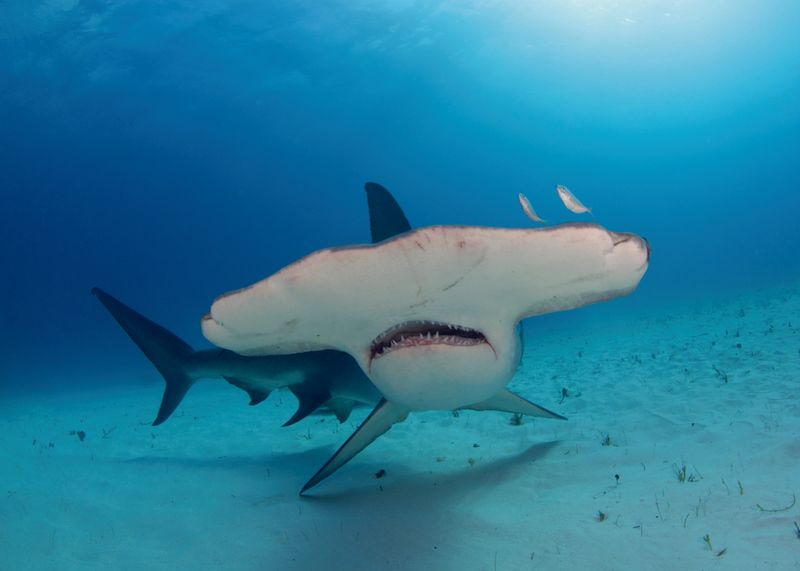
The hammerhead shark’s head is shaped like a hammer for more than just aesthetics. This design provides them with a 360-degree view of their surroundings, minimizing blind spots. Their wide-set eyes enable them to better scan the ocean floor for prey, making them skilled hunters.
The broad, flattened head also aids in the detection of electrical signals from potential prey, enhancing their hunting abilities. This unique vision system makes hammerheads one of the most efficient predators in the ocean.
Did you know? Despite their formidable hunting skills, hammerhead sharks are usually harmless to humans, with very few reported attacks.
Whale Shark: The Gentle Giant
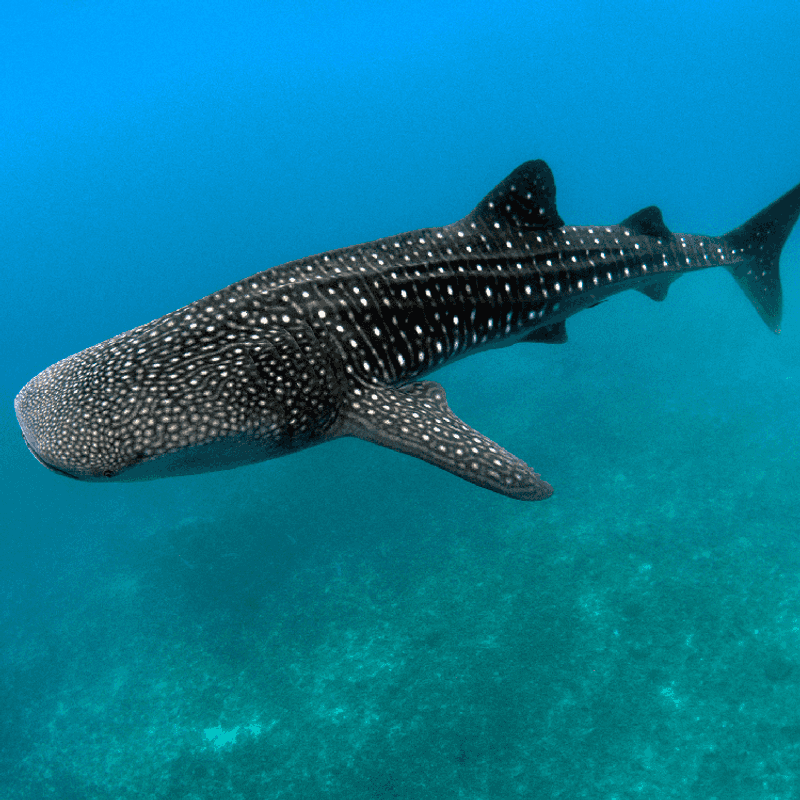
The whale shark is the largest fish in the sea, but it poses no threat to humans. These gentle giants feed primarily on plankton, filtering thousands of gallons of water through their gills each day.
Their enormous size, reaching up to 40 feet, contrasts with their peaceful nature. Whale sharks are known for their docile behavior, often allowing divers to swim alongside them without fear.
Fun fact: Whale sharks have unique spot patterns on their skin, much like human fingerprints, which researchers use to identify individual sharks during studies.
Thresher Shark’s Astonishing Tail
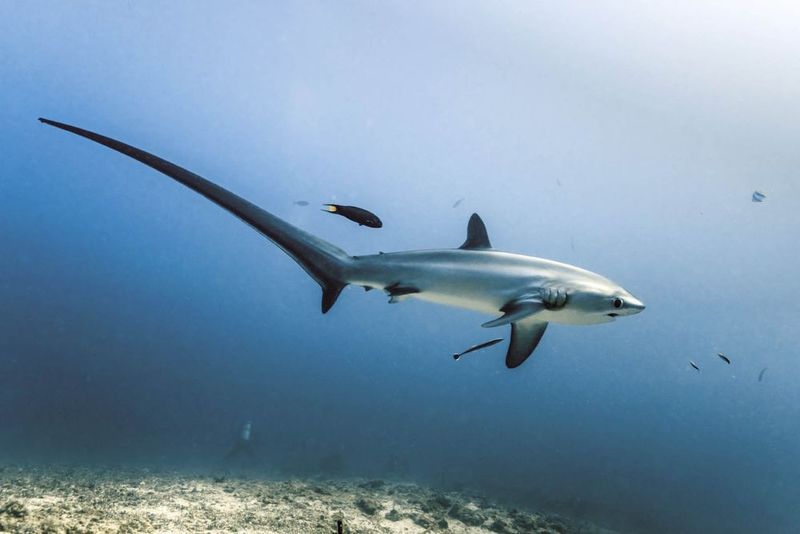
The thresher shark is famous for its incredibly long tail, which can be as long as its body. This tail is not just for show; it’s a powerful tool. Threshers use their tails to stun prey such as fish by slapping the water with incredible force.
This unique hunting technique is both effective and mesmerizing. With a swift flick, they create enough force to disorient or kill their target, ensuring a successful catch.
Thresher sharks are solitary creatures, often found in open waters where they perform these impressive hunting maneuvers.
The Resilient Greenland Shark
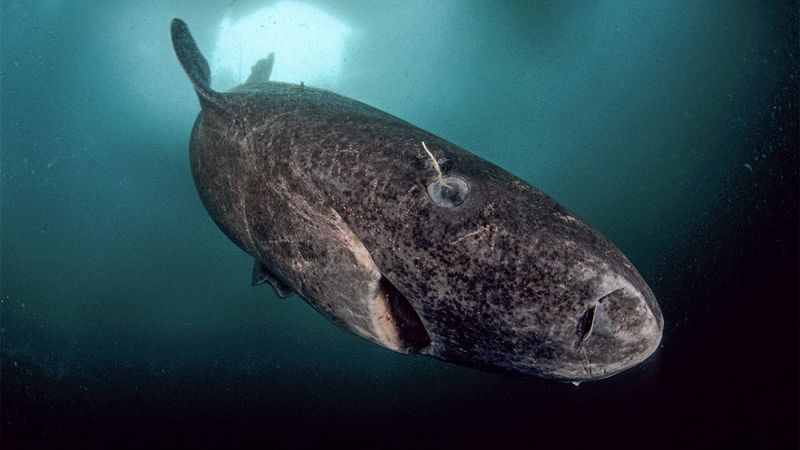
Greenland sharks are among the longest-living vertebrates on the planet, with some estimated to be over 400 years old. These ancient creatures inhabit the deep, cold waters of the North Atlantic and Arctic Oceans.
Their slow metabolism and ability to cope with extreme cold contribute to their incredible longevity. Unlike many other sharks, they are not fast swimmers, moving leisurely through the water.
A curious fact: Greenland sharks are often blind due to parasites that attach to their eyes, but this doesn’t impede their survival. They rely on their keen sense of smell to navigate and hunt.
Tiger Shark’s Varied Diet
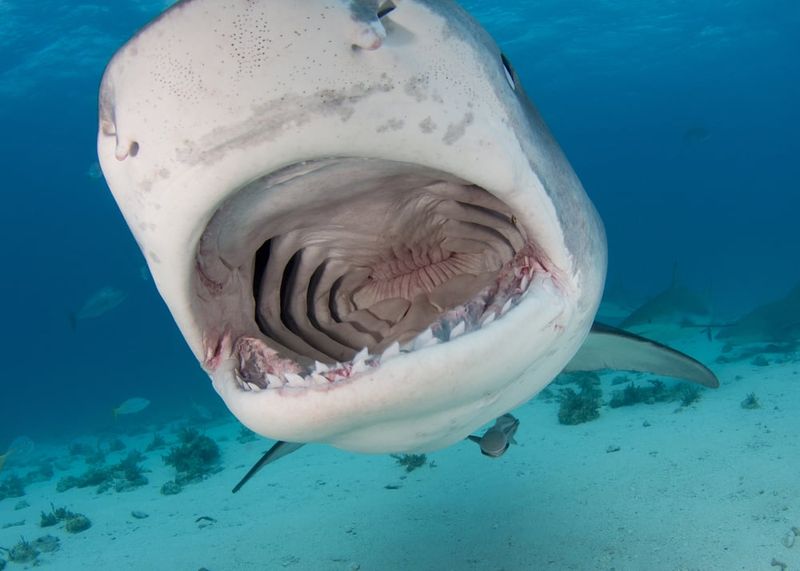
Tiger sharks are known for their diverse diet, earning them the nickname ‘garbage eaters’ of the sea. They consume a wide range of prey, including fish, seals, birds, and even inedible objects.
Their adaptability in diet is a testament to their survival skills. Tiger sharks are often found near coastlines and are known for their curious nature.
This curiosity sometimes leads them to investigate unusual objects, which can include human-made debris. However, their predatory instincts are typically non-threatening unless provoked.
Nurse Shark’s Docile Nature
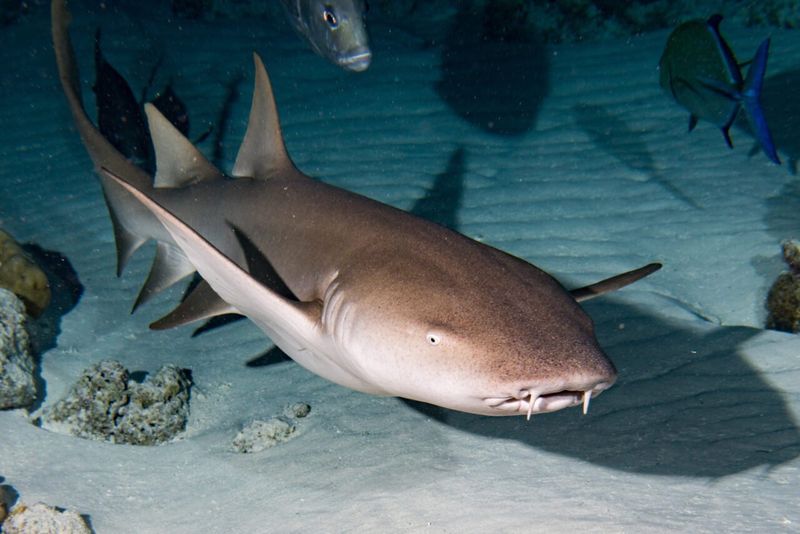
Nurse sharks are known for their placid temperament and often rest motionless on the ocean floor during the day. Unlike their more aggressive counterparts, nurse sharks are generally harmless to humans.
Their mouths are equipped with small, serrated teeth ideal for crushing shellfish, their preferred diet. This unique oral anatomy allows them to feed efficiently without posing a threat to larger animals.
Nurse sharks also possess barbels near their nostrils, which help them detect prey hiding in the sand, showcasing their remarkable adaptability in hunting.
Blacktip Shark’s Dazzling Acrobatics
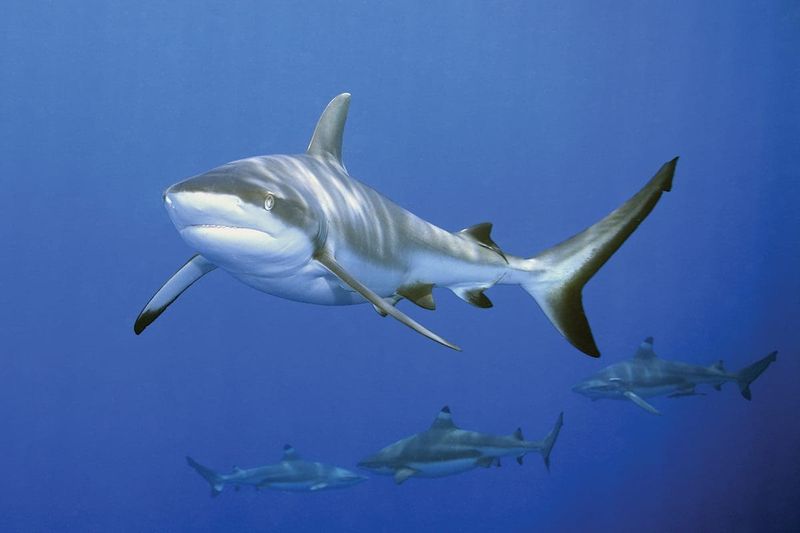
Blacktip sharks are renowned for their acrobatic displays, often seen leaping out of the water in pursuit of prey. Their aerial spins and twists are not just a spectacle but are part of their hunting strategy.
These sharks are typically found in warm, shallow waters and are easily recognizable by the black tips on their fins. They are social creatures, often hunting in groups.
Despite their energetic behavior, blacktip sharks rarely pose a threat to humans and are more interested in fish than people, making them fascinating to observe in the wild.
Lemon Shark’s Social Behavior
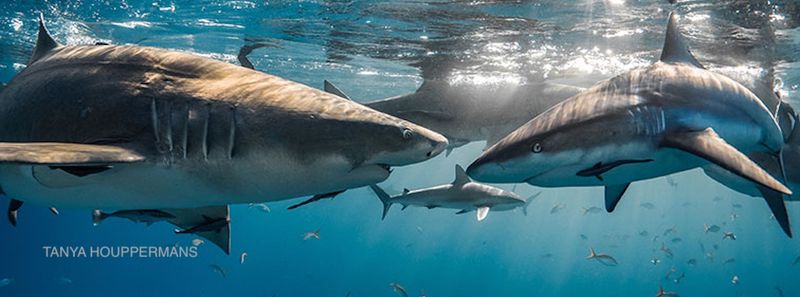
Lemon sharks are unique among sharks for their social nature. Unlike many solitary species, lemon sharks often form groups, especially during their juvenile years.
These social groups aid in learning and protection, allowing young sharks to hone their hunting skills. Lemon sharks are easily identified by their yellowish coloring, which helps them blend into sandy ocean floors.
Their social behavior and group dynamics are subjects of extensive research, providing insights into shark communication and interaction within marine ecosystems.
Bull Shark’s Freshwater Adaptation

Bull sharks are remarkable for their ability to live in both saltwater and freshwater. They can travel far upstream in rivers, a trait not common among sharks.
This adaptability is due to their kidneys’ special ability to adjust to different salinities, allowing them to explore diverse environments. Bull sharks are often found in coastal regions and rivers across the globe.
Their presence in freshwater has led to unconfirmed reports of encounters far inland, adding to their mystique and highlighting their versatile nature.
Mako Shark: Speed Demon of the Sea
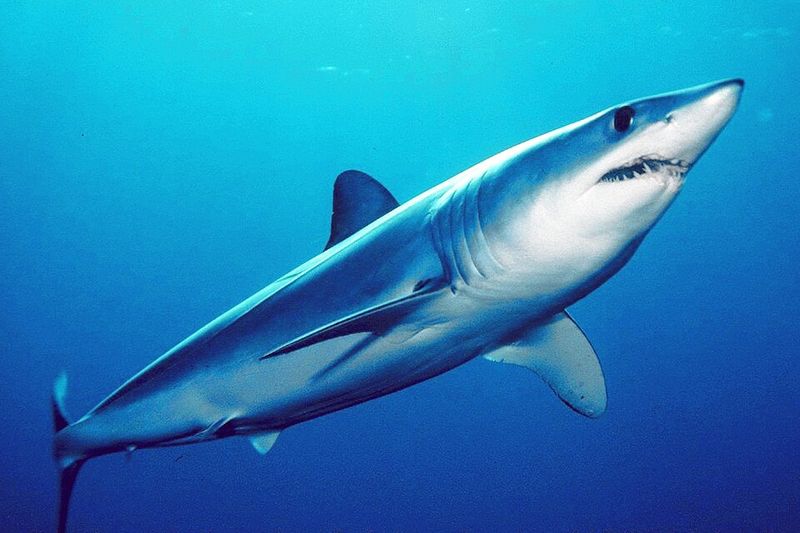
The mako shark is renowned for being the fastest shark, capable of reaching speeds up to 60 mph. This incredible speed makes them formidable predators, often chasing down fast-moving prey like tuna.
Their sleek, torpedo-shaped bodies are designed for rapid swimming, allowing them to cover large distances in search of food.
Mako sharks are also known for their impressive leaps out of the water, which they perform both when hunting and when hooked by fishermen, making them both a thrilling sight and a challenging catch.
Ghostly Goblin Shark
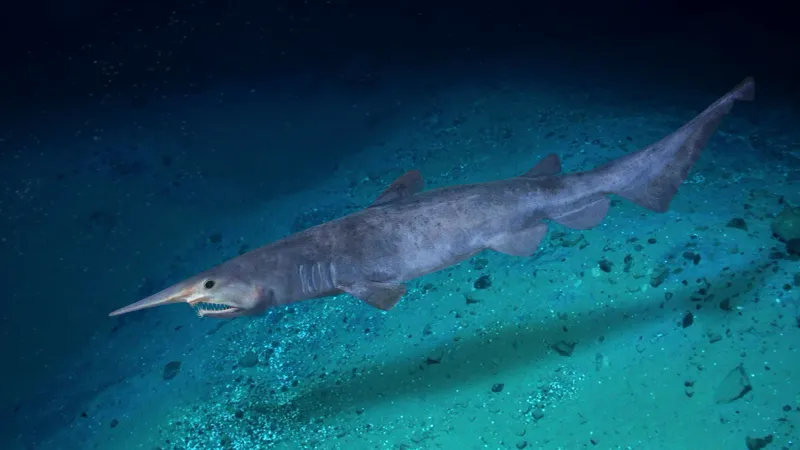
Goblin sharks are deep-sea dwellers known for their ghostly appearance and protrusible jaws. Their long, flat snouts and pinkish skin give them a distinctly otherworldly look.
Found in the depths of the ocean, they are rarely seen by humans. Goblin sharks hunt by extending their jaws forward to snatch prey, a unique adaptation among sharks.
This eerie appearance and hunting method contribute to their nickname as the “vampires of the sea,” intriguing scientists and ocean enthusiasts alike with their mysterious nature.
Zebra Shark’s Striped Mystique
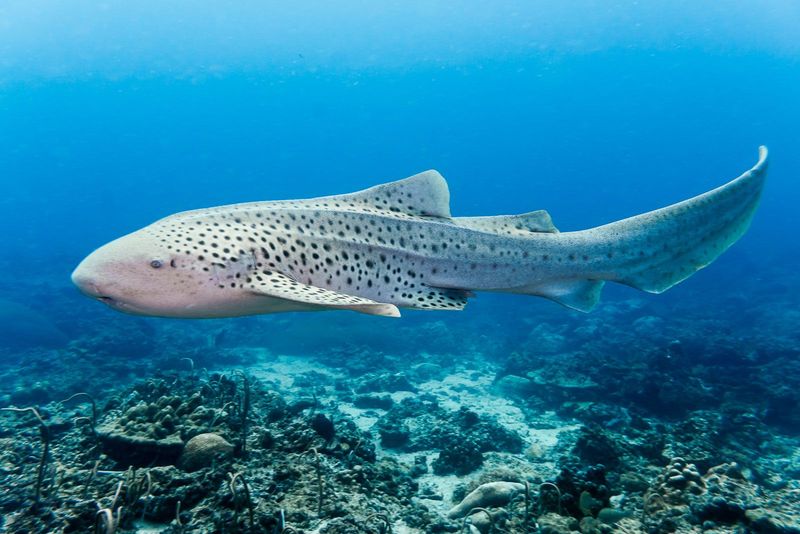
Zebra sharks are named for the unique stripes found on their young, which fade into spots as they mature. These patterns help them blend into their coral reef habitats.
Zebra sharks are nocturnal hunters, using their slender bodies to navigate tight spaces in search of food. They are known for their gentle nature and are often found resting on sandy ocean floors during the day.
Their transformation from stripes to spots fascinates researchers, offering insights into the adaptability and life stages of marine creatures.

